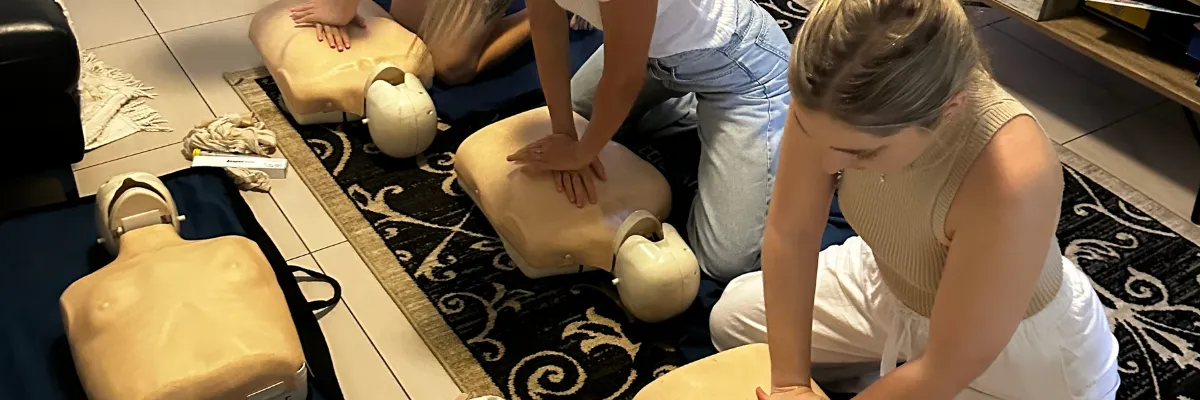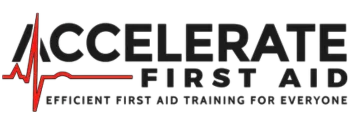
Advanced Resuscitation Protocols Explained: A Comprehensive Guide for Emergency Response Professionals
You're halfway through your shift when it happens. A visitor collapses near the wave pool, no pulse, not breathing. Your team springs into action, but basic CPR alone might not be enough. In those first few minutes, having advanced skills could literally mean the difference between life and death.
Over 25,000 out-of-hospital cardiac arrests happen across Australia every year, but only 12% of people survive. That survival gap? A big part comes down to the difference between basic life support and advanced resuscitation protocols. For those working in high-stakes environments—managing water parks, patrolling beaches, coordinating emergency response teams—this isn't about ticking a certification box. It's about having skills that actually work when seconds count.
Advanced resuscitation protocols go way beyond chest compressions and rescue breaths. We're talking sophisticated techniques like advanced airway management, oxygen therapy systems, defibrillation procedures, and coordinated team responses that save lives in real emergencies.
What Are Advanced Resuscitation Protocols?
Advanced resuscitation protocols are systematic, evidence-based procedures that go way beyond basic CPR to manage life-threatening emergencies with specialized interventions. These protocols form the backbone of HLTAID015 certification in Australia.
Key components include:
The big difference from basic life support? Basic focuses on compressions and breaths. Advanced protocols require specialized equipment, deeper training, and understanding what's happening inside the body during emergencies.
Understanding the Difference: Basic vs Advanced
Both basic and advanced resuscitation save lives, but advanced skills let you do significantly more when equipment's available.
In basic CPR, you're maintaining blood flow through compressions and breaths. With advanced protocols, you're actively managing airways with devices, delivering high-concentration oxygen, analyzing cardiac rhythms, and potentially delivering life-saving shocks. You're not just keeping someone alive—you're actively treating the emergency.
HLTAID015 standards evolved because professional responders in high-risk environments need more than basic skills. The Australian Resuscitation Council updates these guidelines regularly—recent 2024-2025 changes refined oxygen delivery protocols and clarified advanced airway use.

Core Components of HLTAID015
Advanced Airway Management
When someone's unconscious and not breathing properly, positioning their head might not be enough. Advanced airway devices physically maintain an open airway.
Oropharyngeal airways (OPAs) - go through the mouth to the back of the throat, holding the tongue forward. You measure from mouth corner to earlobe for sizing, insert upside down, then rotate 180 degrees. Wrong sizing or poor technique triggers gagging or vomiting—dangerous in unconscious patients.
Nasopharyngeal airways (NPAs) - go through the nose, better for patients with gag reflexes or when you can't open their mouth. Lubricate first, measure nostril to earlobe, insert gently along the nose floor.
Head-tilt chin-lift works for most casualties. But with potential spinal injury—falls, diving accidents, wave impacts—use jaw-thrust instead. Push the jaw forward without moving the neck.
Suction devices - clear blood, vomit, or water from airways. You can't ventilate effectively through fluid. Insert without suction, then apply suction while withdrawing.
Oxygen Therapy Systems
Room air is only 21% oxygen. Someone in respiratory distress or cardiac arrest needs more.
Nasal cannulas - deliver 1-6 liters per minute (24-44% oxygen) for conscious patients with mild distress. Simple face masks - provide 6-10 liters per minute (40-60% oxygen) for moderate distress. Non-rebreather masks - deliver 10-15 liters per minute (up to 95% oxygen) for serious situations—your go-to for severe respiratory distress.
Bag-valve-mask (BVM) ventilation - is how you breathe for someone who's stopped. Use the "EC clamp" technique—thumb and index finger make a C around the mask, other fingers make an E along the jaw, lifting it into the mask. Squeeze smoothly over one second, watching for chest rise. Two-person BVM is way more effective—one person maintains seal, the other squeezes.
Defibrillation Protocols
For every minute without defibrillation in shockable rhythms, survival odds drop 10%. That's why AEDs are everywhere.
Shockable rhythms - (ventricular fibrillation and pulseless ventricular tachycardia) respond to defibrillation. Non-shockable rhythms need CPR and drugs but not shocks. The AED determines this automatically.
AED pad placement: one pad upper right chest below collarbone, other lower left side below armpit. For kids under 8 or 25kg, use pediatric pads—one chest, one back. Get them on fast, stuck firmly to dry, bare skin.
When the AED says "analyzing, don't touch," everyone backs away. Movement interferes with rhythm analysis. Touch during shock and you'll get shocked too.
Post-shock: restart CPR immediately. The AED analyzes again after two minutes. Continue until paramedics arrive or the person shows life signs.
Medication Administration
As an HLTAID015-certified first aider, you assist with prescribed medications or use workplace-approved emergency medications, not administer drugs like paramedics.
Document everything—what, how much, when, response. Paramedics need this information.
The DRSABCD Action Plan
This systematic approach prevents missing critical steps when adrenaline's pumping.
1. Danger – Assess scene safety. What caused this? Is danger still present? Check electrical hazards, unstable structures, traffic. Position equipment safely.
2. Response – Check consciousness. Tap shoulders, speak loudly. Use AVPU: Alert, Voice, Pain, Unresponsive. This determines airway management needs.
3. Send for help – Call 000 immediately. If alone, use speaker and start treatment. With bystanders, point at someone specific: "You in the blue shirt—call 000." Give good information: exact location, what happened, patient condition, what you're doing.
4. Airway – Open with head-tilt chin-lift (or jaw-thrust for spinal injuries). Clear obstructions. Insert OPA if unconscious with no gag reflex, or NPA if gag present.
5. Breathing – Start oxygen fast. Not breathing? BVM with high-flow oxygen. Breathing inadequately? BVM-assisted ventilation. Breathing adequately? Non-rebreather mask at 15 L/min.
6. CPR – No pulse? Start compressions immediately. At least 5cm deep, 100-120 per minute. Full chest recoil between compressions. Rotate compressors every two minutes—fatigue causes shallow compressions.
7. Defibrillation – Get AED pads on fast. Continue compressions until AED says stop. Shock if advised, then immediately resume CPR.
Essential Equipment
Airway management: OPA set (sizes 0-5), NPA set (6-8mm), suction device, pocket masks, BVM with masks
Oxygen delivery: portable cylinder (D or E-size), regulator/flow meter, nasal cannulas, masks, BVM with reservoir, tubing
Defibrillation: AED with adult/pediatric pads, spare battery, razor, scissors, towel
Support: pulse oximeter, gloves, face protection, emergency blankets, documentation supplies
Medications (if protocols allow): adrenaline auto-injectors, aspirin, glucagon, GTN spray
Maintenance Discipline
Daily checks: oxygen pressure, AED ready light, intact packaging, charged batteries. Five minutes prevents nasty surprises.
Monthly testing: AED self-test, medication expiry dates, equipment condition, suction function. Replace anything questionable.
Storage requirements: secure oxygen cylinders upright, AEDs away from extreme temperatures, medications in cool/dry areas. Document every check.
Gold Coast Applications
Theme Parks and Water Facilities
High visitor volumes create higher emergency probability. Thousands daily means cardiac events, near-drownings, heat stroke, severe allergic reactions happen. HLTAID015-certified senior staff provide faster, more effective responses.
Water-related emergencies need advanced skills—rescue breaths, airway management for unconscious patients, oxygen therapy for hypoxia. Multi-station coordination requires planning: where's the nearest AED, how fast can oxygen reach the wave pool, who's backup?
Beach Patrol
Ocean emergencies come with unique challenges. Sand in airways needs clearing before ventilation. Salt water affects oxygen exchange differently. Environmental factors—salt spray, sand, direct sun—affect equipment. Your gear needs weatherproofing, storage needs climate control.
Multiple patient scenarios happen—rips catching several swimmers, marine stings affecting groups. Advanced skills extend to triage: who needs treatment first, how do you manage three casualties with one responder until backup arrives?
Corporate and Event Safety
Large venues, events, corporate campuses need people with advanced skills. Event-specific risks change equipment priorities—marathons focus on heat illness and cardiac events, concerts deal with crowd incidents.
Mass casualty considerations at large events require rapid triage, treatment initiation on serious cases, coordinating multiple response teams. Gold Coast's tourism generates huge event numbers—all need advanced first aid coverage.

Certification and Career Benefits
HLTAID015 takes one to two days—theory plus intensive hands-on practice. You'll demonstrate airway management, BVM technique, oxygen therapy setup, AED operation, and team coordination through timed scenarios.
Certification expires in 12 months. Skills degrade fast without regular use. Best practice is quarterly skills practice minimum, with annual refresher training.
Career Impact
Senior lifeguard roles almost always require HLTAID015. You're supervising staff, managing high-risk environments, being the most qualified first responder. Safety operations management, emergency response coordination, training instructor positions—all need advanced certification.
Gold Coast's tourism industry, theme parks, beaches, aged care, corporate sector—they all need qualified people. Job listings regularly cite HLTAID015 as required or highly desirable.
Staying Sharp
Quarterly skills practice minimum. Get equipment out, run scenarios, practice BVM technique, refresh AED protocols. Monthly is better. After real emergencies, debrief honestly—what went well, what could improve?
Stay current with protocol updates. The Australian Resuscitation Council updates guidelines periodically. Subscribe to industry newsletters, follow ARC website, attend update sessions.
Build peer training groups. Monthly practice with other certified colleagues maintains skills better than solo review. Run scenarios, critique techniques, share real-world experiences.
Common Challenges
Performance Under Pressure
Your first real emergency feels completely different from practice. Stress hits differently when it's a real person, their family watching, staff looking to you for leadership.
Stress management: controlled breathing before starting centers you. Focus on immediate next steps, not the entire situation. Think "check their airway now," not "save this person's life."
Scenario-based practice: realistic training scenarios prepare you better. Push for challenging scenarios—multiple patients, equipment failures, difficult environments. Practice until actions become automatic.
Making Advanced Resuscitation Skills Your Reality
The gap between knowing about these protocols and performing them under pressure comes down to proper training. You can read everything online, watch videos, study guidelines. But when someone collapses, their family screaming, junior staff looking at you—that's when real training shows its value.
Advanced resuscitation protocols aren't just for paramedics. They're for senior lifeguards managing water facilities, safety coordinators in corporate environments, beach patrol officers dealing with ocean emergencies. They're for anyone whose role puts them first on scene when emergencies happen.
The certification takes one to two days. The career benefits last years. Better job opportunities, higher pay, advancement into leadership roles, confidence to handle situations that leave others frozen. More than that, you're gaining skills that genuinely save lives—early advanced intervention dramatically improves cardiac arrest survival rates.
Your skills fade without practice. Certification expires after 12 months. Staying current requires ongoing commitment. But that commitment pays dividends every time you respond knowing you're prepared, every time you lead a successful resuscitation, every time someone survives because you had the advanced skills needed.
The question isn't whether advanced resuscitation training has value. The question is whether you're ready to step up and become the person others count on when everything goes wrong. Thousands of Gold Coast professionals have made this choice.
What's stopping you from being next?


